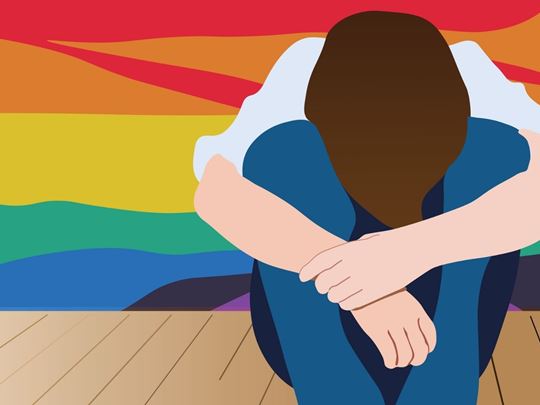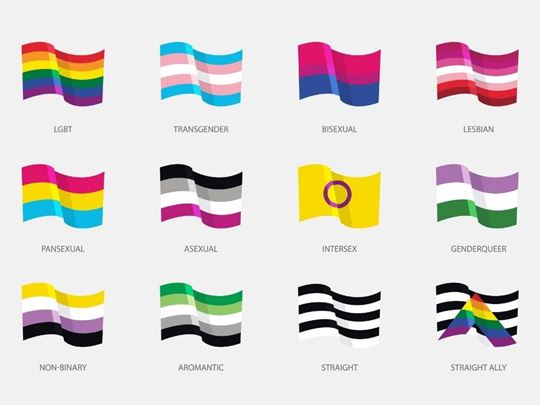
We understand. It’s a lot to go through with a lot of information to process. Which is why you should never go through it alone. There are always people there to love and support you as you make new discoveries about yourself, including your foster parents.
If you ever think to yourself “I am confused about my sexuality” or wonder how many gender identities there are and which applies to you, then we’re here to help.
In this guide, we’ll break down everything from gender dysphoria to non-binary and everything else that might have you confused about your sexuality. This is to help you feel comfortable and confident in taking those next steps to talk about what you’re going through.
What’s the difference between gender identification and sexual orientation?
First thing’s first.
Let’s look at the difference between gender identity and sexual orientation because they’re not the same thing.
Sexual orientation describes your physical, emotional, and/or romantic attraction to another person. Sexual orientations can be, for example, straight (attracted to the opposite sex), gay (attracted to the same sex), bisexual (romantically and physically attracted to members of both sexes), asexual (may not be interested in sex but still feel emotionally close to others).
There are many other sexual orientations, including being fluid, where your sexual orientation changes over time.
Gender identity is something completely different. This is your own, internal, personal sense of being male or female or non-binary, which we’ll look at in more detail below. There are dozens of genders, outside of man or woman, that you can identify with.
A simple way to understand the difference is that sexual orientation is about who you’re attracted to and who you want to have relationships with. While gender identity is about who YOU are.

What are the different types of genders?
Although today’s society is much more accepting of different genders, there is still an emphasis on the gender binary. This is the assumption that all people are either male or female. But as well as identifying as male or female (or man or woman) you can also identify as non-binary.
A non-binary person identifies with a gender that is neither female nor male. It’s an umbrella term and there are lots of different genders that exist outside of the gender binary. Some of these include:
- Agender – being genderless.
- Androgyne – where you identify somewhere between female and male.
- Bigender – when you have two gender identities, either at the same time or at different times.
- Demiboy – somewhat identifying as a male (but not completely).
- Demigirl – somewhat identifying as a female (but not completely).
- Demigender – having a partial connection to one gender.
- Genderfluid – where you move between two or more gender identities at different times.
- Genderqueer – when you have no exclusive connection to any gender.
- Multigender – where you have more than one gender.
- Pangender – having many or all genders.
- Transfeminine – a person assigned male at birth but identifies with the feminine gender.
- Transmasculine – a person assigned female at birth but identifies with masculine gender.
With both transfeminine and transmasculine, just because the person identifies with a feminine or masculine gender, it doesn’t necessarily mean they identify as a woman or man.
What does gender fluid mean?
You might have wondered, what is gender fluid?
A person who is gender fluid is flexible regarding the sex with which they identify. A gender fluid person believes that gender is non-binary. So not all people fit into either being male or female, and you don’t have to have a set gender or a set place on the gender spectrum.
You might be wondering if gender confusion can be a phase. Changing how you identify doesn’t mean you’re “confused.”
When you’re a teenager, you’re just discovering who you are. This means you might choose to experiment or act on different feelings as you go on your journey of finding out who you truly are.
During your teenage years, your hormonal and physical changes mean you will notice an increase in sexual feelings. For a lot of people, it takes time to understand who you are or who you’re becoming.
Many people no matter what age they are experience changes in who they’re attracted to and how they identify. This is called fluidity. And, again, it’s totally normal.
What is gender dysphoria?
If you were to describe gender dysphoria, what would you say?
Firstly, it’s a difficult thing to go through as it refers to feelings of distress or even discomfort that you can experience when your assigned gender (that you were born with) doesn’t match your gender identity.
If you have gender dysphoria you might feel uncomfortable or distressed over the sexual characteristics of your body and how you feel about yourself. Gender roles might also make you feel upset or angry.
Gender dysphoria can differ from person to person and it might affect self-image or behaviour. If you think you have gender dysphoria and you’re struggling with your feelings, then speaking to a trusted loved one is a great first step. There are also a number of helplines and services that can offer their support.
How to talk to your foster parents about sexuality and gender
Although you are under no obligation to discuss your gender or sexuality with others, it can help. Especially if you are feeling confused or overwhelmed.
It can be a tricky topic, as there are a lot of assumptions or misunderstandings surrounding it, but society is changing. And discussions around sexuality and gender are becoming far more commonplace. Which is great.
If you choose to talk to your foster parents or someone else you trust about what you’re going through, then make sure you do so when time isn’t an issue. This is a big conversation and you don’t want to be rushed. Talking about it in a neutral or space where you feel safe is also important.
Try to do your research before speaking to them. The more you know the better you’ll be at describing what you’re going through. Understanding the terminology is also a great starting point, but don’t overwhelm them. It can be a lot to take in at first.
Let your foster parent, or whoever you choose to speak to, know which names and pronouns you feel most comfortable with (if you know them). That way they can show their support by researching them.
Let them know that you’d love for them to be a part of your journey, so you can learn together. Talking about your feelings is so important, and this isn’t something you should go through alone.
Sexual and gender confusion help is always at hand
If you’re struggling with your sexual and/or gender identity then please know, it’s completely normal and you don’t have to go through it by yourself.
Now you understand a bit more about sexual orientation and gender, you have the tools you need to talk about it. Open up to those you trust; your friends, your foster parents, or even your favourite teacher. You have a huge support network available to you, and they’re always on hand whenever you need them.